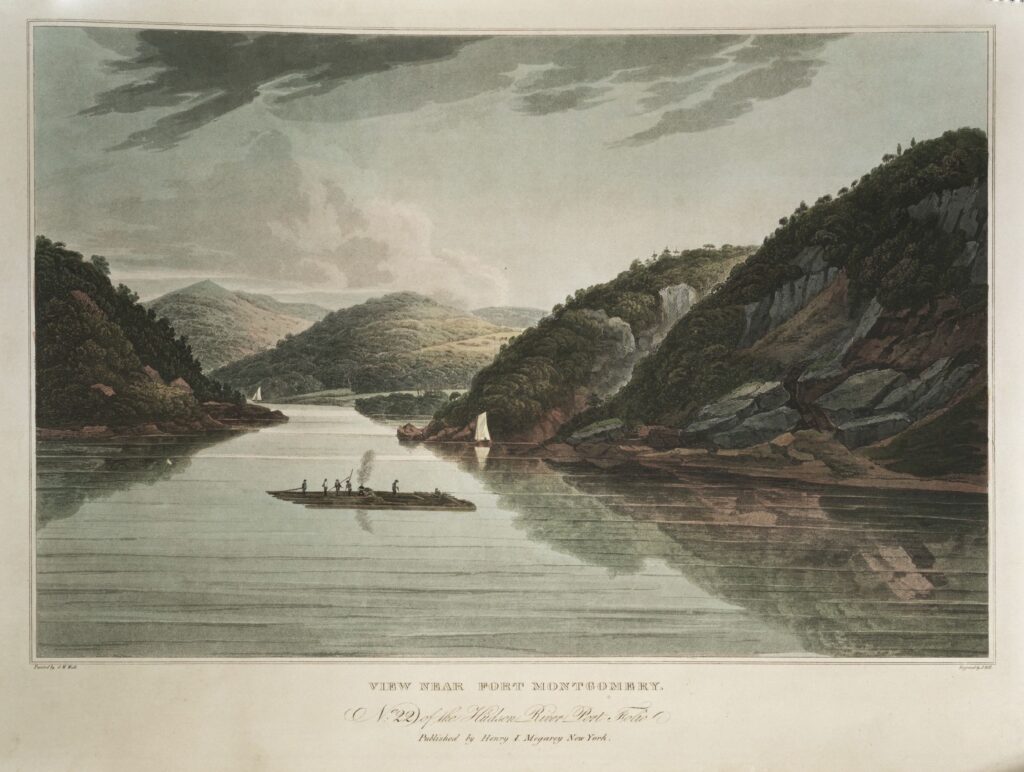
William Guy Wall, View Near Fort Montgomery, from Hudson River Portfolio (1821-1825)
British-born Thomas Cole is often hailed as the “Father of the Hudson River School,” the groundbreaking painters who first turned a romantic eye to the mountains and rivers of New York, New England and beyond. His “debut moment” is dated to 1825 when he sold three landscape paintings and took his first, short sketching trip up the Hudson River. Five years earlier, however, William Guy Wall (1792-after 1864) was among the many Irish who sailed for American shores. Upon arrival he followed the entire course of the Hudson River for over 200 miles from Lake Luzerne in the foothills of the Adirondacks to New York Harbor, traveling in the company of British-born poet and journalist John Agg. Immediately upon his return he set about publishing his images in the magisterial compendium Hudson River Portfolio, which appeared in five parts between 1821 and 1825 with descriptive text by Agg. The Portfolio dazzled viewers with the quality of prints, hand coloring and impressive size (14 ½ x 21 ½ inches). Given New York’s close-knit art circle at the time and the fact that prints exist in multiples and readily circulate, it is virtually impossible that Cole was unaware of his predecessor’s remarkable renderings.

Charles C. Ingham, The Great Adirondack Pass, Painted on the Spot, 1837, Adirondack Experience.
Born and trained in Dublin, Charles Cromwell Ingham (1796 or 1797-1863) arrived in New York two years prior to Wall and soon became known as the city’s premier “ladies’ painter” for the portraits and genre scenes he rendered in meticulous detail. Occasionally he escaped his studio and the demands of capturing flattering likenesses to work outdoors. In 1837 he accompanied Ebenezer Emmons on the New York State Survey and sketched key sites across the region that subsequently appeared in New York State Assembly Document, number 200 (Albany 1838). His maps and landscapes constitute the earliest published views of the Adirondack Peaks, then a remote and little-known region. Although commissioned to accompany the report, a few sets of the lithographed pictures were issued separately. He also painted in oil on canvas a work entitled The Great Adirondack Pass, Painted on the Spot, 1837. His compelling images prompted others to seek out the sites he identified – including the challenging Indian Pass – that have since become the iconic places for artists and hikers.
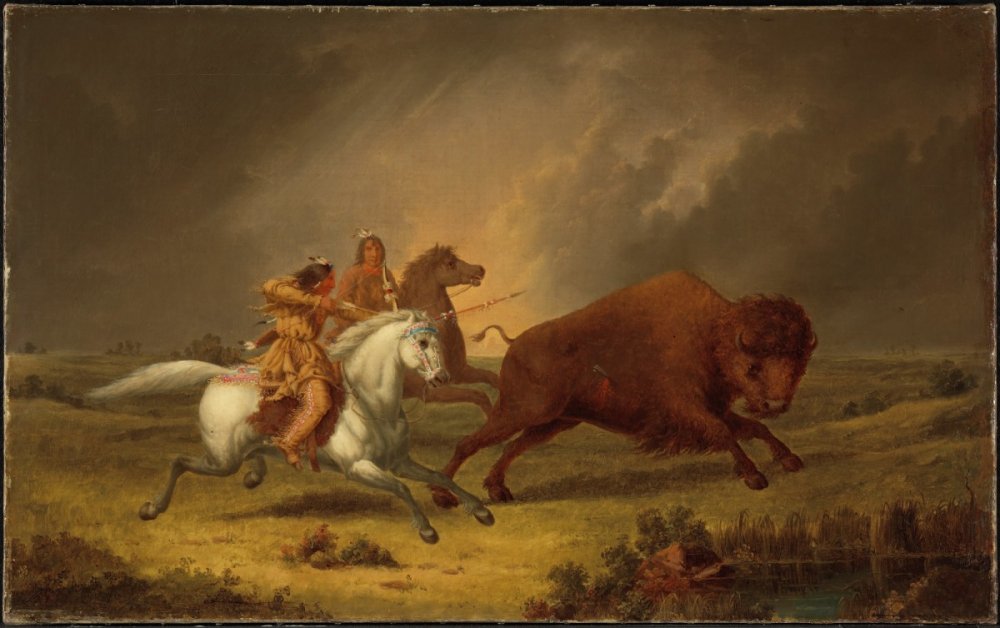
Paul Kane, Assiniboine Hunting Buffalo, 1851-56, National Gallery of Canada
Emigrating from Mallow, County Cork, Ireland, Paul Kane (1810-1871) at the age of nine arrived in Toronto, Canada (then named “York”). Inspired by the example of Indian painter George Catlin, he resolved “to devote whatever talents and proficiency I possessed to the paintings of a series of pictures illustrative of North American Indians and scenery,” as he declared in the preface to his book Wanderings of an artist among the Indians of North America (1859). Crossing the border into the United States he spent two years – between 1846 and 1848 – creating one of the most extensive records of the Northwest.
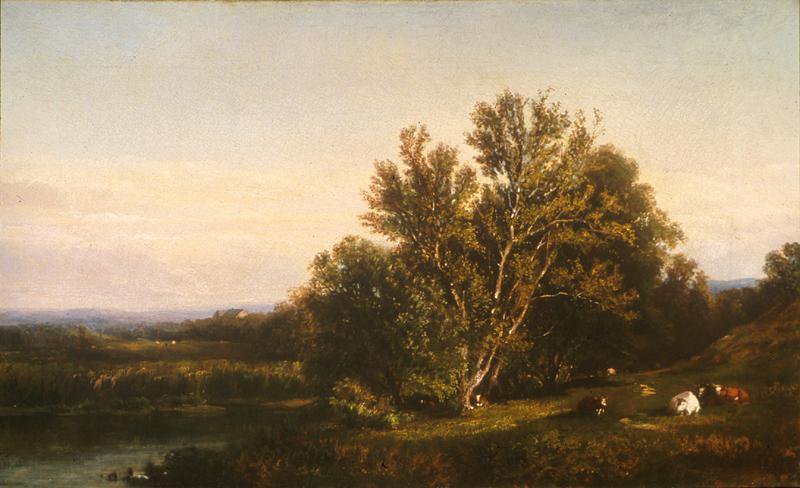
Eliza Greatorex, Landscape near Cragsmoor, 1865, Rockwell Museum
Eliza Pratt Greatorex (1819-1897) departed Ireland as a young woman of about twenty, bound for New York, where she pursued an artistic career. The few professional women artists at the time confined themselves to pictures of babies and domestic scenes, but Greatorex unusually was committed to landscape. Her style combined Hudson River subjects with a French-inspired Barbizon style that was in vogue in the post-Civil War years. In recognition of her contribution to American art, she was elected an Associate of the prestigious National Academy of Design in 1869, the sole female member. The subject of my recent book Restless Enterprise: The Art and Life of Eliza Pratt Greatorex (U. of California Press, 2020), she had a long and productive career evolving from painter to pioneer of the etching revival. She nurtured the next generation of women artists including her daughters Kathleen and Elizabeth Greatorex.
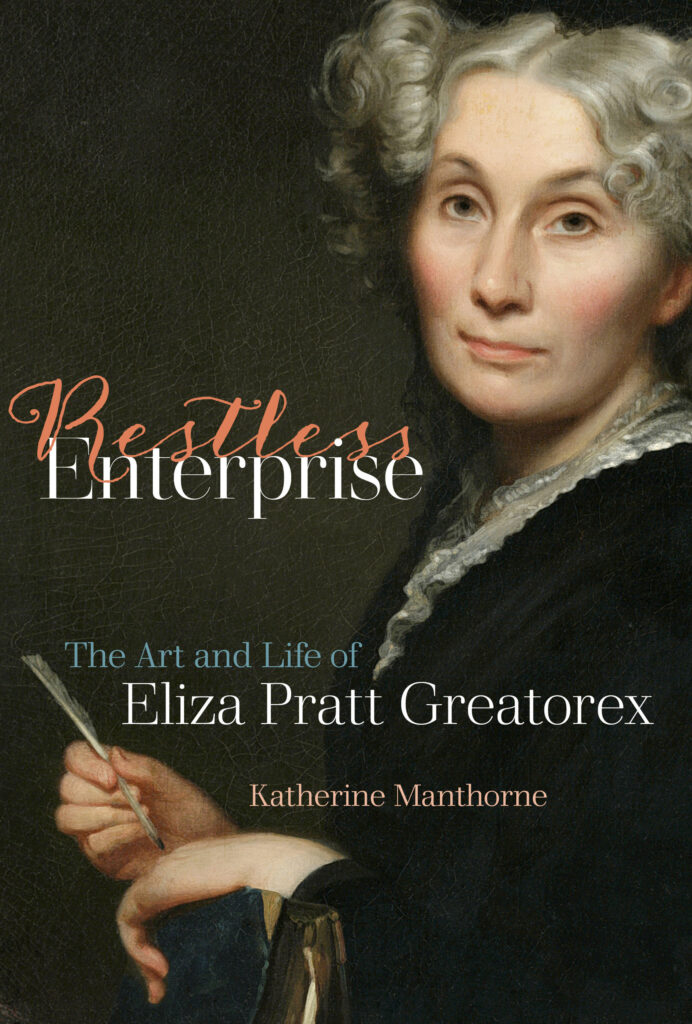
About 1872 a lithograph entitled St. Patrick’s Day in America depicted a family of Irish descent in their American parlor surrounded by objects signifying the dual identity. On this same day 150 years later, it is appropriate to acknowledge the foundational contributions of Irish-born Wall, Ingham, Kane and Greatorex to the forging of an American landscape art.
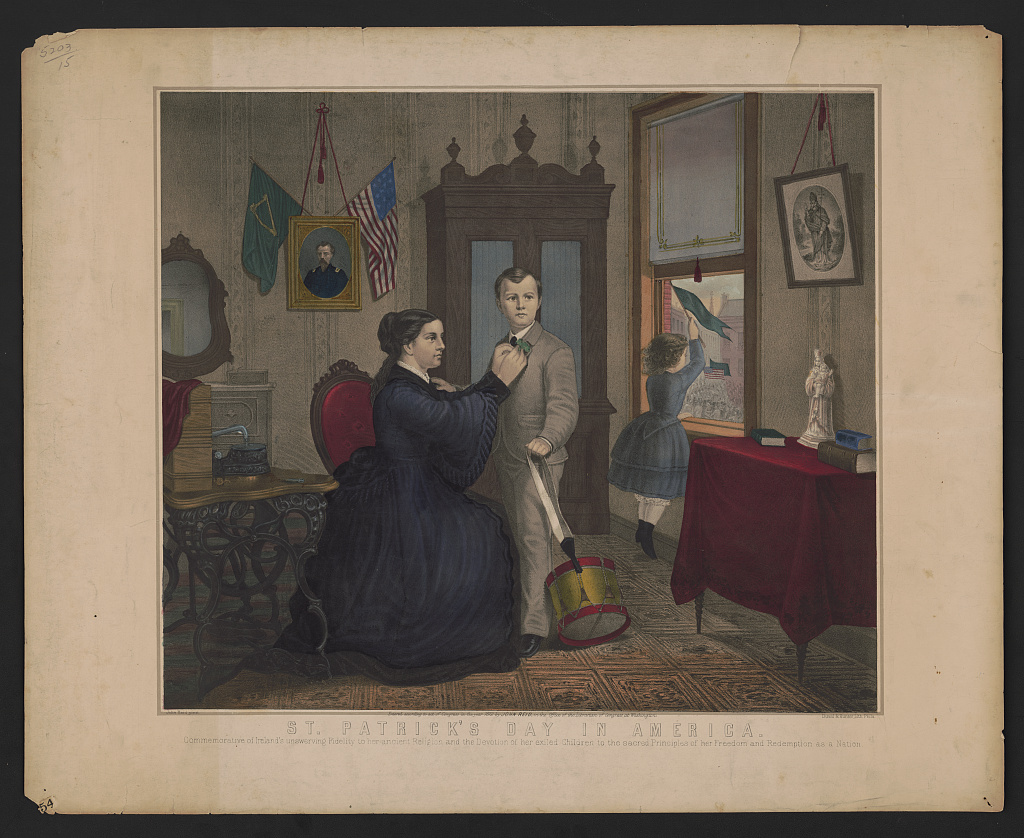
John Reid, pinxt, Duval & Hunter, Litho, St. Patrick’s Day in America, ca. 1872, lithograph, Library of Congress
Happy St. Patrick’s Day!